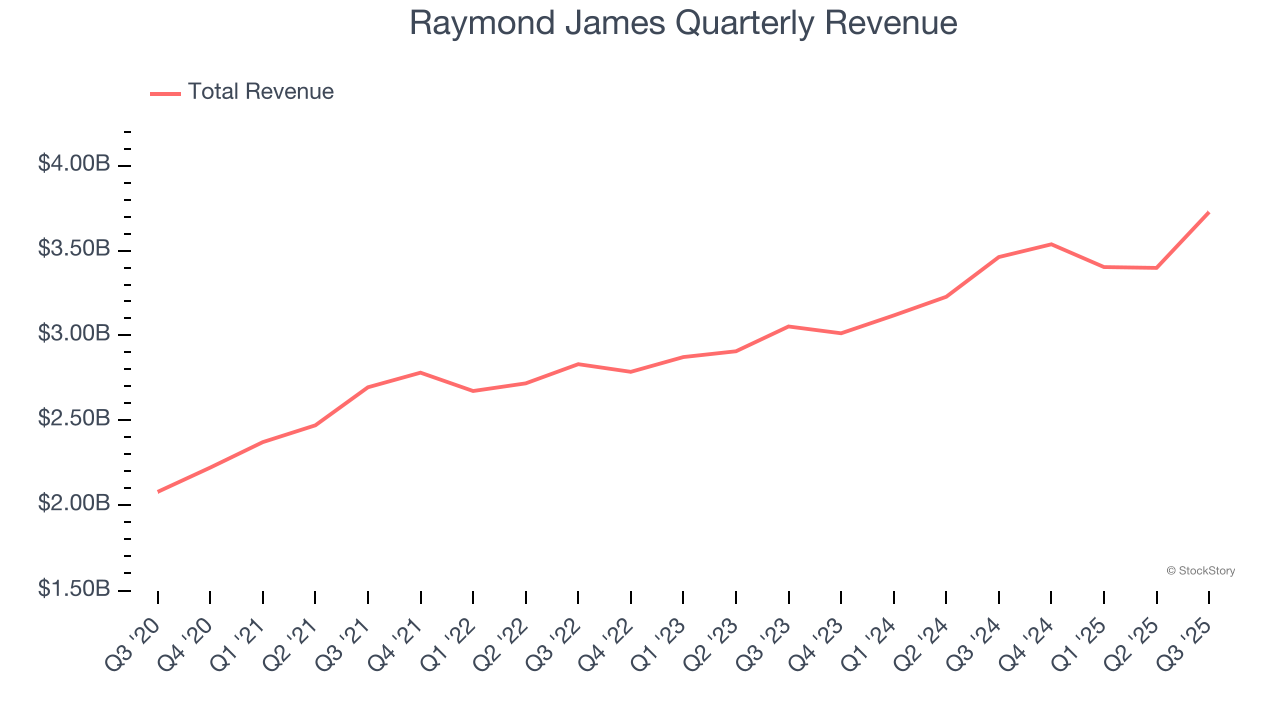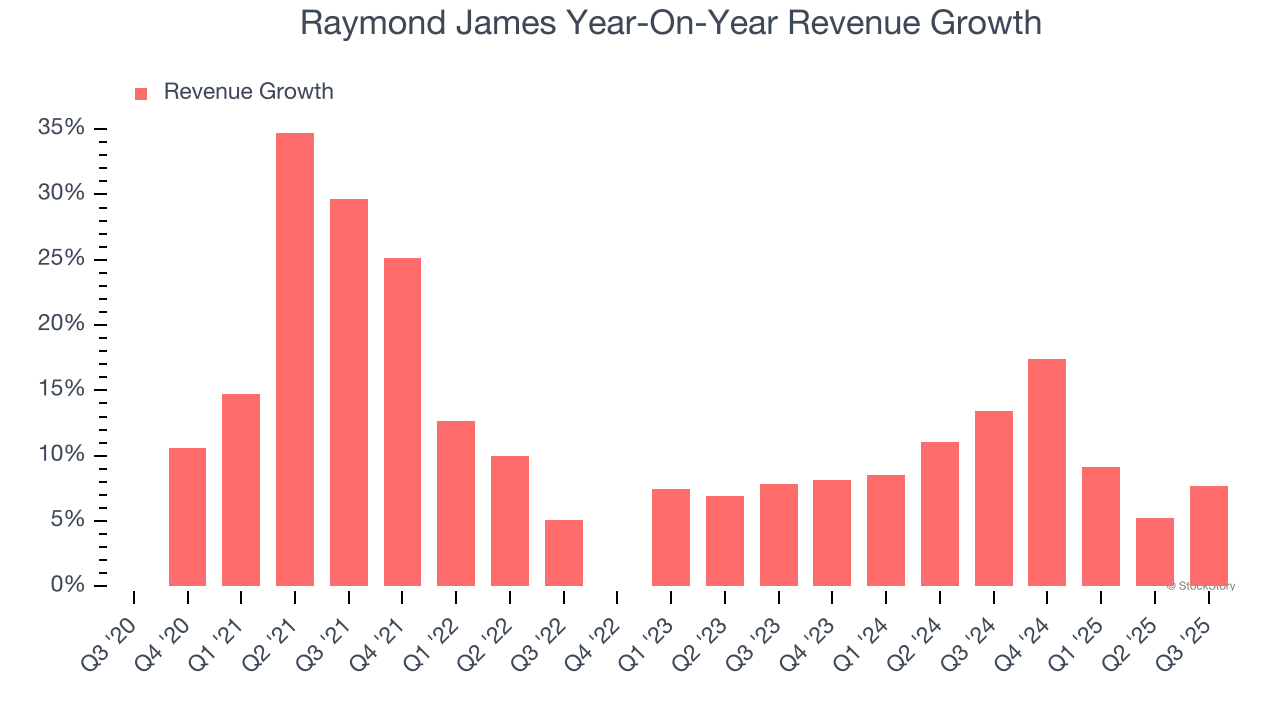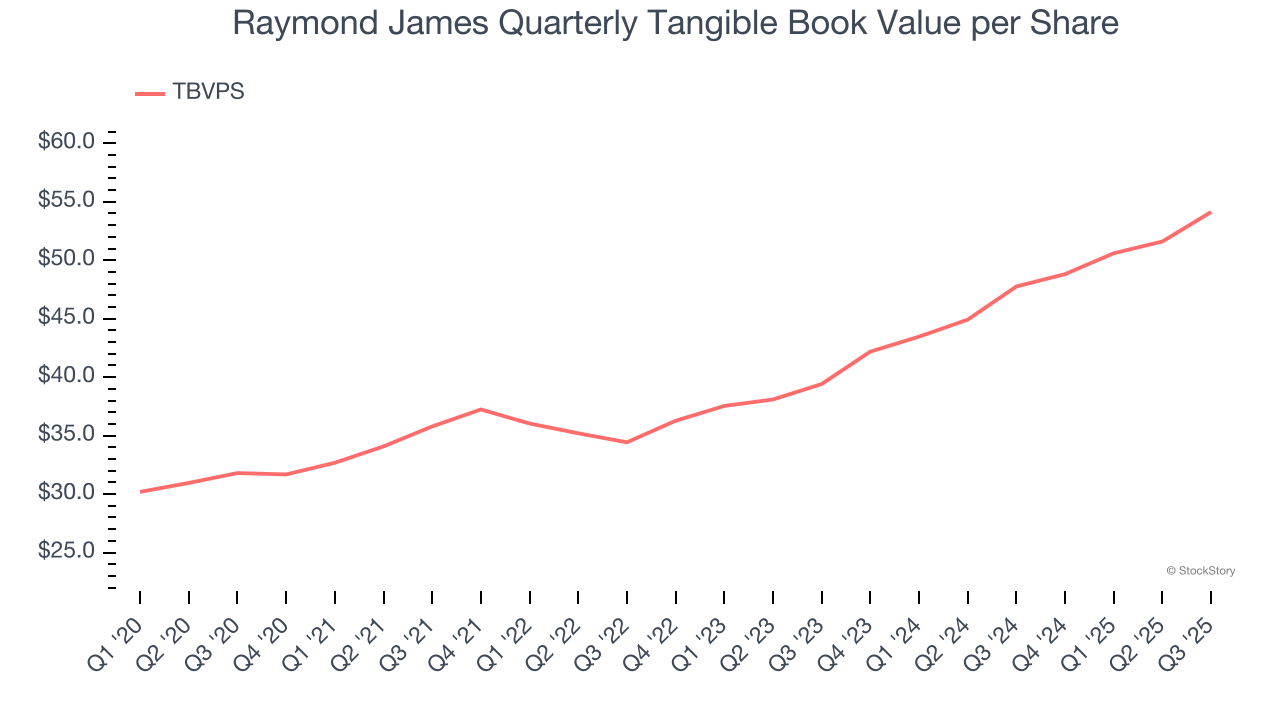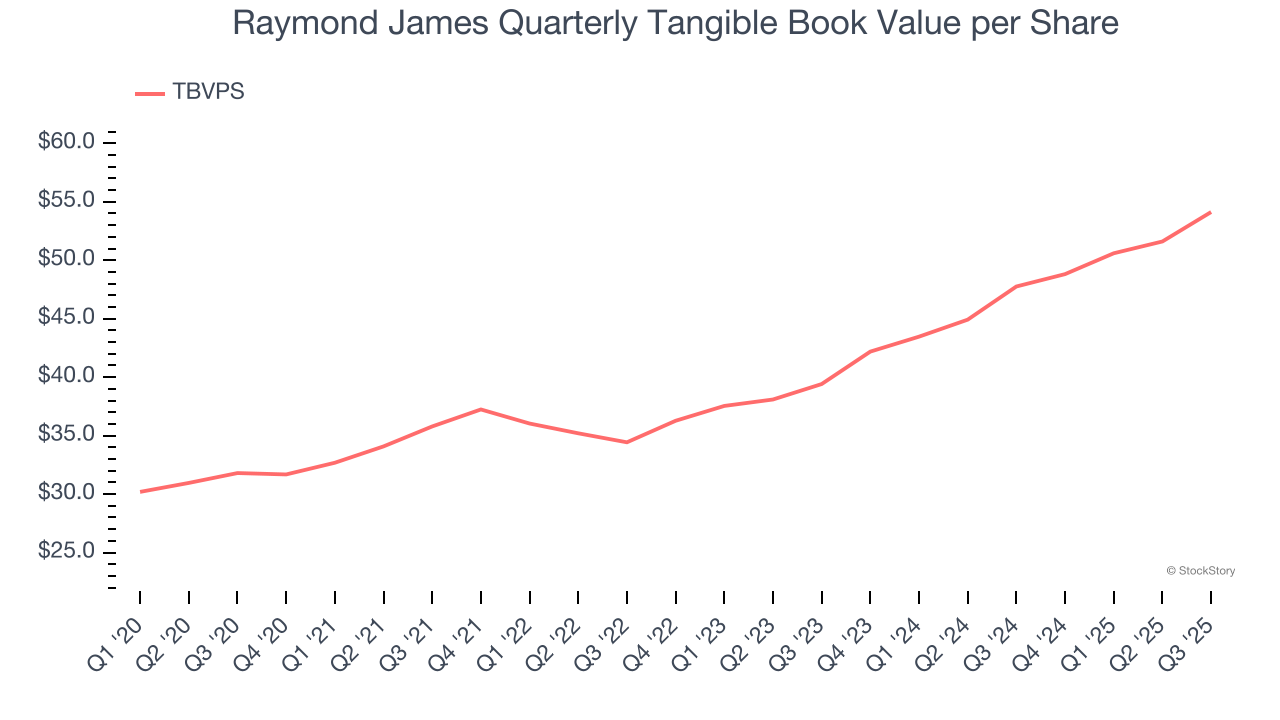
Financial services firm Raymond James Financial (NYSE: RJF) reported Q3 CY2025 results exceeding the market’s revenue expectations, with sales up 7.7% year on year to $3.73 billion. Its non-GAAP profit of $3.11 per share was 10% above analysts’ consensus estimates.
Is now the time to buy Raymond James? Find out by accessing our full research report, it’s free for active Edge members.
Raymond James (RJF) Q3 CY2025 Highlights:
- Assets Under Management: $274.9 billion (12.3% year-on-year growth)
- Revenue: $3.73 billion vs analyst estimates of $3.63 billion (7.7% year-on-year growth, 2.7% beat)
- Pre-tax Profit: $731 million (19.6% margin, 3.8% year-on-year decline)
- Adjusted EPS: $3.11 vs analyst estimates of $2.83 (10% beat)
- Tangible Book Value per Share: $54.12 vs analyst estimates of $53.14 (13.3% year-on-year growth, 1.8% beat)
- Market Capitalization: $33.11 billion
Company Overview
Founded in 1962 and headquartered in St. Petersburg, Florida, Raymond James Financial (NYSE: RJF) is a diversified financial services company that provides wealth management, investment banking, asset management, and banking services to individuals and institutions.
Revenue Growth
A company’s long-term performance is an indicator of its overall quality. Any business can put up a good quarter or two, but many enduring ones grow for years. Thankfully, Raymond James’s 12% annualized revenue growth over the last five years was solid. Its growth surpassed the average financials company and shows its offerings resonate with customers, a great starting point for our analysis.

We at StockStory place the most emphasis on long-term growth, but within financials, a half-decade historical view may miss recent interest rate changes, market returns, and industry trends. Raymond James’s annualized revenue growth of 10% over the last two years is below its five-year trend, but we still think the results were respectable.  Note: Quarters not shown were determined to be outliers, impacted by outsized investment gains/losses that are not indicative of the recurring fundamentals of the business.
Note: Quarters not shown were determined to be outliers, impacted by outsized investment gains/losses that are not indicative of the recurring fundamentals of the business.
This quarter, Raymond James reported year-on-year revenue growth of 7.7%, and its $3.73 billion of revenue exceeded Wall Street’s estimates by 2.7%.
Software is eating the world and there is virtually no industry left that has been untouched by it. That drives increasing demand for tools helping software developers do their jobs, whether it be monitoring critical cloud infrastructure, integrating audio and video functionality, or ensuring smooth content streaming. Click here to access a free report on our 3 favorite stocks to play this generational megatrend.
Tangible Book Value Per Share (TBVPS)
Financial institutions with multiple business lines manage complex balance sheets that span various financial activities. Market valuations reflect this operational complexity, prioritizing balance sheet strength and sustainable book value growth across all business segments.
This is why we consider tangible book value per share (TBVPS) an important metric for the sector. TBVPS represents the real net worth per share across all business segments, providing a clear measure of shareholder equity regardless of the complexity of operations. Traditional metrics like EPS are helpful but face distortion from the complexity of diversified operations, M&A activity, and various accounting rules that can obscure true performance across multiple business lines.
Raymond James’s TBVPS grew at a solid 11.2% annual clip over the last five years. TBVPS growth has also accelerated recently, growing by 17.2% annually over the last two years from $39.41 to $54.12 per share.

Tangible Book Value Per Share (TBVPS)
Financial firms generate earnings through diverse intermediation activities, making them fundamentally balance sheet-driven enterprises. Investors focus on balance sheet quality and consistent book value compounding when evaluating these multifaceted financial institutions.
This explains why tangible book value per share (TBVPS) is a premier metric for the sector. TBVPS provides concrete per-share net worth that investors can trust when evaluating companies with complex, multi-faceted business models. EPS can become murky due to the complexity of multiple revenue streams, acquisition impacts, or accounting flexibility across different financial services, and book value resists financial engineering manipulation.
Raymond James’s TBVPS grew at a solid 11.2% annual clip over the last five years. TBVPS growth has also accelerated recently, growing by 17.2% annually over the last two years from $39.41 to $54.12 per share.

Key Takeaways from Raymond James’s Q3 Results
It was good to see Raymond James beat analysts’ revenue and EPS expectations this quarter. Additionally, tangible book value per share beat. Overall, we think this was a decent quarter with some key metrics above expectations. The stock remained flat at $166.40 immediately following the results.
Sure, Raymond James had a solid quarter, but if we look at the bigger picture, is this stock a buy? The latest quarter does matter, but not nearly as much as longer-term fundamentals and valuation, when deciding if the stock is a buy. We cover that in our actionable full research report which you can read here, it’s free for active Edge members.





